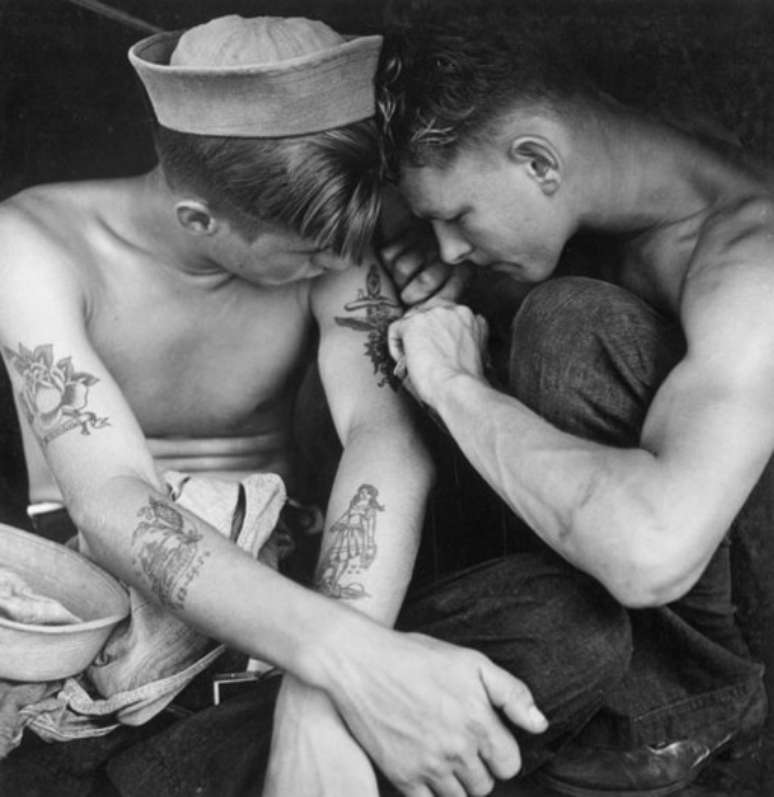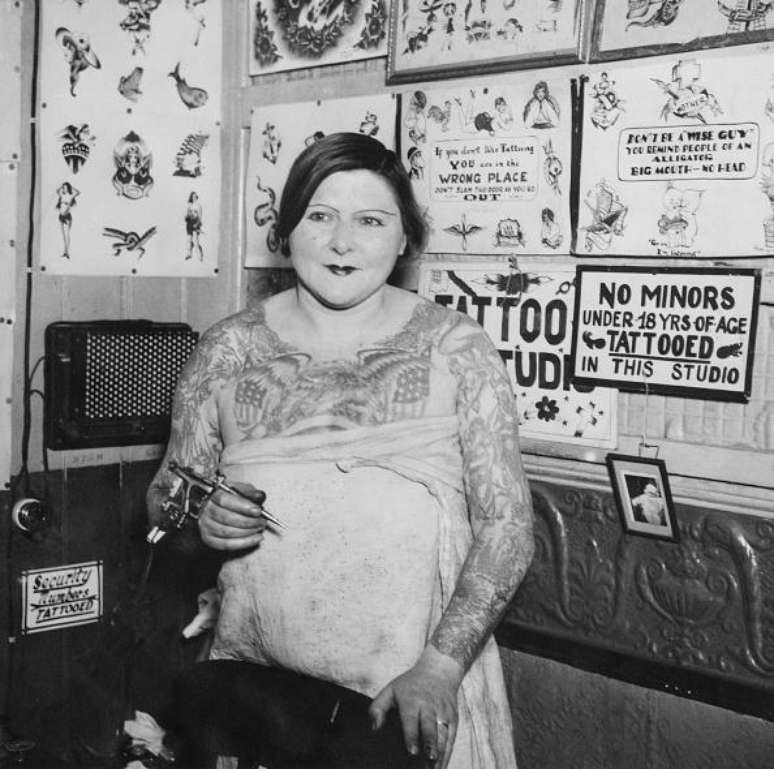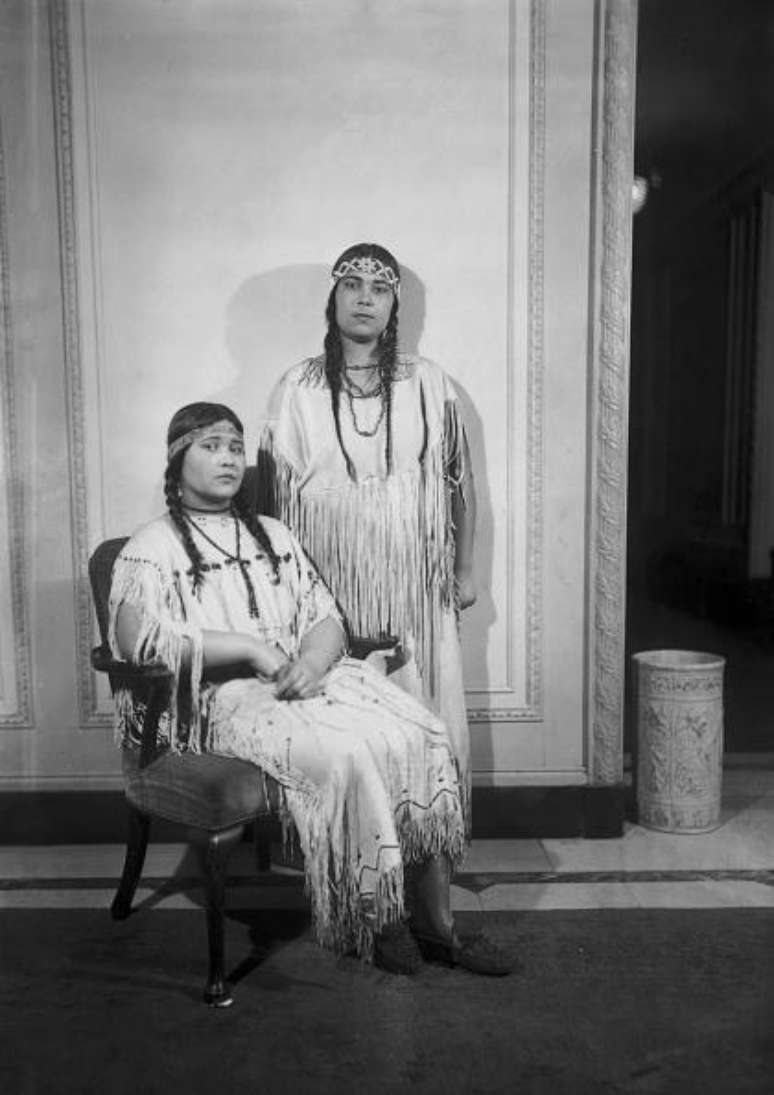In 1961, New York officially banned the practice of tattooing, making any permanent reproduction of artwork on citizens’ bodies illegal. However, this restriction has not stopped tattoo artists from continuing their work, even illegally. It wasn’t until 1997 that the decades-old ban was finally lifted, allowing the art to thrive in the Big Apple.
Today the city is one of the main tattoo centers in the world. The “Tattooed New York” exhibition., on display at the New York Historical Society, explores this incredible transformation, displaying more than 250 objects, artworks, photographs and documents that highlight the rich history of this practice in the city, revealing how it evolved from taboo to a form of artistic expression respected.
The causes of the ban
The official reason why the city government banned tattoos was the risk of the spread of infectious diseases following a hepatitis B epidemic. However, many tattoo artists suspected that the ban was part of a “clean-up” strategy to improve Health. the 1964 World’s Fair, an international event held in the city.
Additionally, there have been reports linking the ban to likely personnel issues, due to disagreements between tattoo artists and municipal officials. Even so, many groups have developed their own identities through the prohibited skin arts. Meet some of them!
Native American Tattoos
The exhibition begins by exploring the origins of tattoos in New York, highlighting the Haudenosaunee (Iroquois) tribe, who believed in the healing and protective properties of the art on the skin. For Native Americans, body carvings were more than just an art form: they were symbols of identity and protection from evil.
Sailors’ relationship with tattoos

In the 18th century, sailors adopted tattoos as a form of personal identification. Their initials were tattooed on their skin and recorded on sailors’ protection certificates. Over time these arts have become an integral part of the culture of this profession.
Tattoos and women
An often overlooked aspect of tattoo history is the popularity of this body art among women. During the Victorian era, high society ladies invited tattoo artists to create discreet designs in easily hidden places, such as the wrists. Therefore, tattooing has become a form of empowerment for women, challenging social norms.
Mildred Hull: the pioneer of women’s tattoos

Mildred Hull, considered the first woman to open a tattoo studio on the Bowery, contributed to the growing acceptance of body designs among women. She not only tattooed others, but she also tattooed herself, amassing more than 300 permanent limbs on her body. Her story is an inspiring example of people who challenged the stereotypes of the time.
Today, tattooing is a vibrant part of New York’s cultural scene, and the city celebrates its diversity and innovation. From Native Americans to pioneering women, body design has played an important role in the history of the Big Apple. The exposition “Tattooed New York” is a tribute to this rich and multifaceted history, highlighting how skin art has evolved from a prohibition to a deeply valued form of personal and artistic expression.
Source: Terra
Ben Stock is a lifestyle journalist and author at Gossipify. He writes about topics such as health, wellness, travel, food and home decor. He provides practical advice and inspiration to improve well-being, keeps readers up to date with latest lifestyle news and trends, known for his engaging writing style, in-depth analysis and unique perspectives.


-sl6oy2p06omu.png)


![New Day ahead: A burdensome, franc, losing control … which awaits you until August 25, 2025 [SPOILERS] New Day ahead: A burdensome, franc, losing control … which awaits you until August 25, 2025 [SPOILERS]](https://fr.web.img6.acsta.net/img/a5/23/a523eff7de1e2b5906e9eda48d08e180.jpg)

![Such an excellent sun in advance: Summary of the episode on Monday, August 25, 2025 [SPOILERS] Such an excellent sun in advance: Summary of the episode on Monday, August 25, 2025 [SPOILERS]](https://fr.web.img4.acsta.net/img/d4/f7/d4f7205d1d5c20b03112603176615360.jpg)
